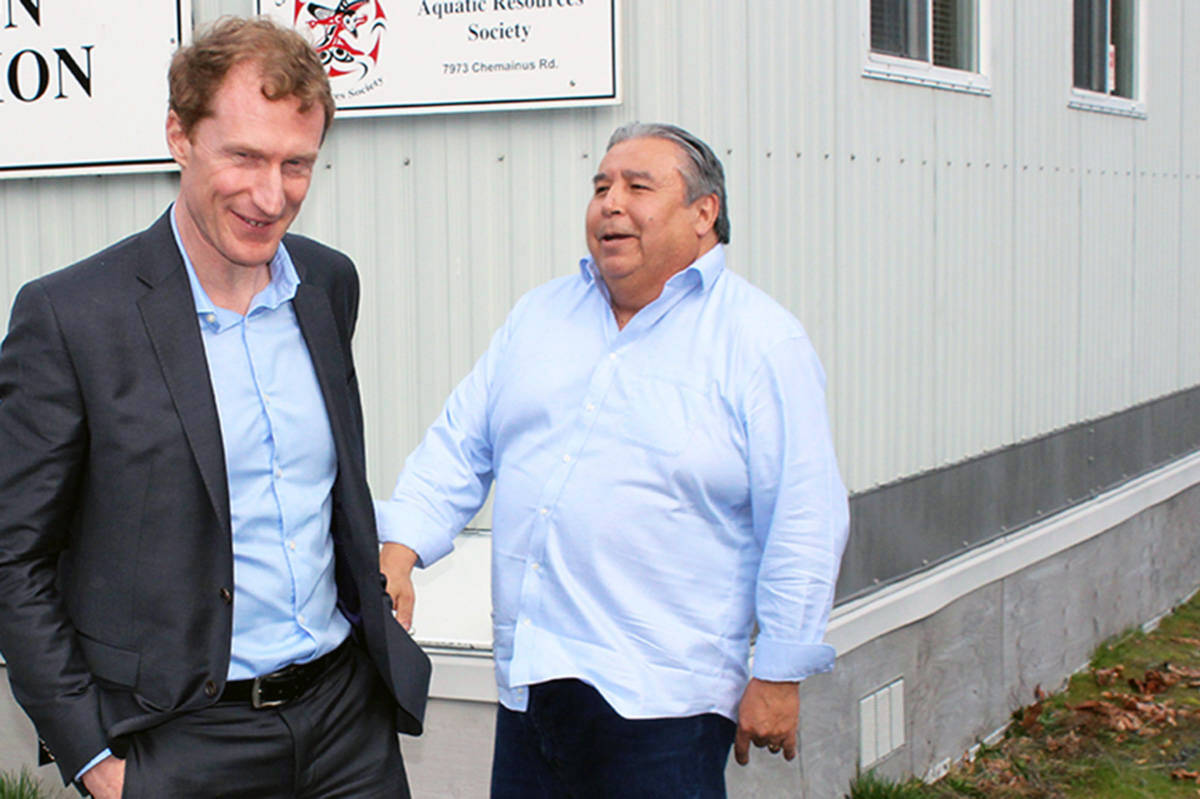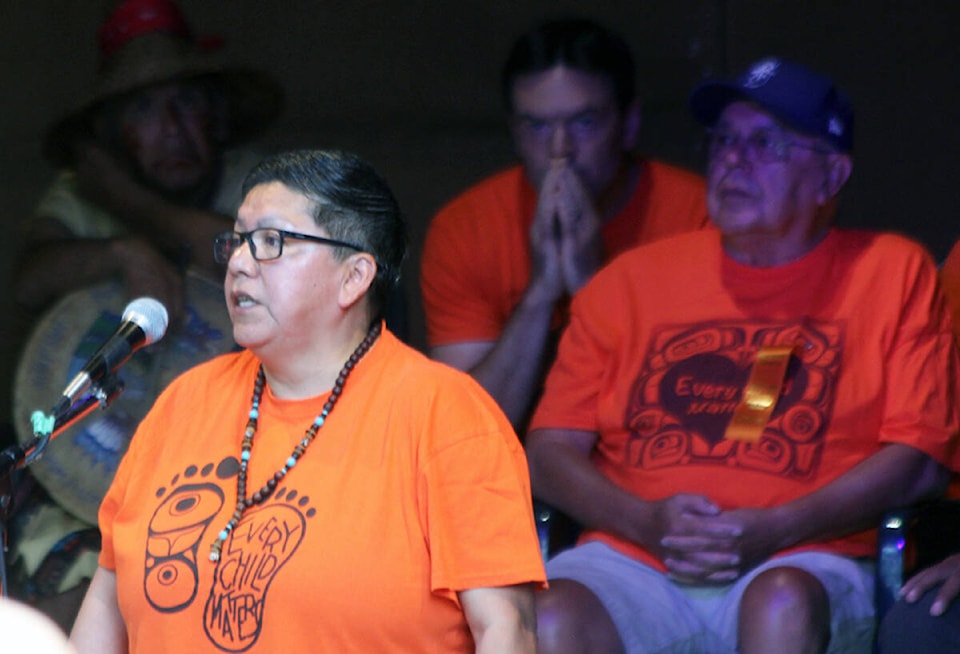The provincial government and Cowichan Nation, made up of five Indigenous bands, have signed an agreement to advance reconciliation, work collaboratively on key priorities and support self-determination and self-government.
Murray Rankin, Minister of Indigenous Relations and Reconciliation, and Katrine Conroy, Minister of Forests, Lands, Natural Resource Operations and Rural Development, were joined for a signing ceremony at the B.C. Parliament buildings on Sept. 14 by Cowichan Tribes Chief William Seymour, Stz’uminus First Nation Chief Roxanne Harris, Penelakut Tribe Chief Joan Brown, Halalt First Nation Chief James Thomas and Lyackson First Nation Chief Richard Thomas.
Under the agreement, the province and Cowichan Nation will work collaboratively on implementing Cowichan Nation laws, traditions, customs and practices; advancing Cowichan Nation self-determination and self-government; co-operative decision-making and dispute resolution; and identifying opportunities for economic and socio-cultural well-being.
The agreement establishes formal governance structures, including a political forum with annual leadership meetings between chiefs and ministers to strengthen the collaborative working relationship between the two governments, and a solutions forum to identify issues or concerns early and work together proactively to find solutions. A board to oversee implementation will also be established.
Collectively, the Cowichan Nation has almost 8,000 members.
“Our government-to-government relationship with Cowichan Nation is based on a recognition of rights,” Rankin indicated. “I look forward to continuing to build our relationship so we can address challenges collaboratively and build opportunities that will benefit all members of Cowichan Nation, and everyone who lives in the territory.”
“The government-to-government agreement is a stepping stone of combined efforts of further developing a relationship with the province and the recognition of the Cowichan Nation’s rights and title,” added Brown. “This collaborative agreement will foster tools to further advance our efforts in self-governing, to understand the opportunities as a collective and we look forward to working with everyone.”
“From our elders we learned that we need to strive to get back what was originally ours, access to our traditional resources such as our fishing grounds,” remarked James Thomas. “It’s taken a long time to come together. This is a small part of reconciliation, the recognition of the importance with regard to the way we ran our societies prior to contact and settlement.”
“This has been a multi-generational effort, every chief who went before us, fighting for the recognition of our nationhood, fighting for the rights and title of our people,” offered Richard Thomas. “This is the first step to true reconciliation for our nation, for our community, for our people.”
“We all have the shared goal of building working relationships that will empower us to work on challenging issues together through discussion and negotiation,” reasoned Doug Routley, MLA for Nanaimo-North Cowichan. “This agreement helps set out the structures needed to address shared interests and improve communication.”

